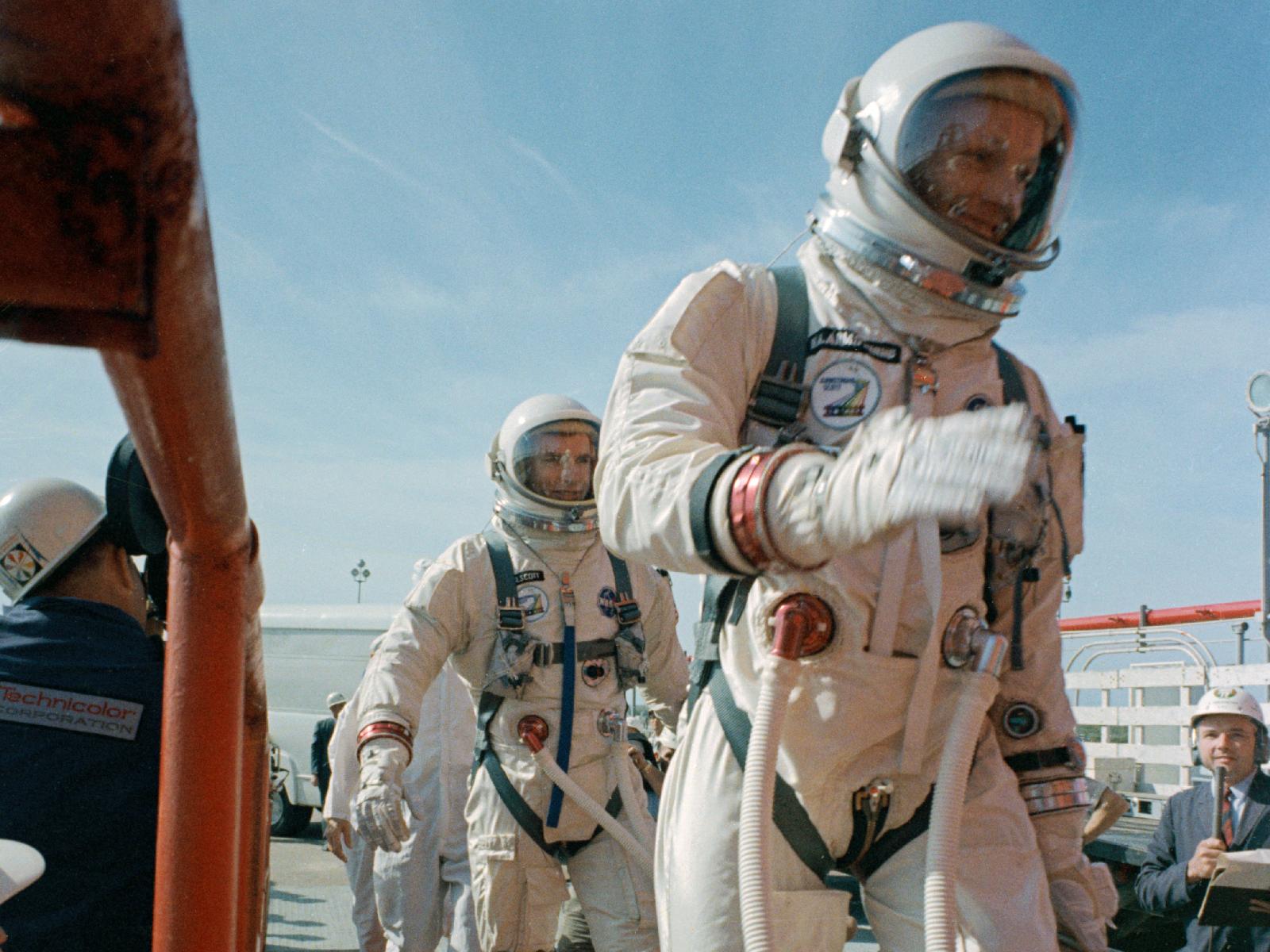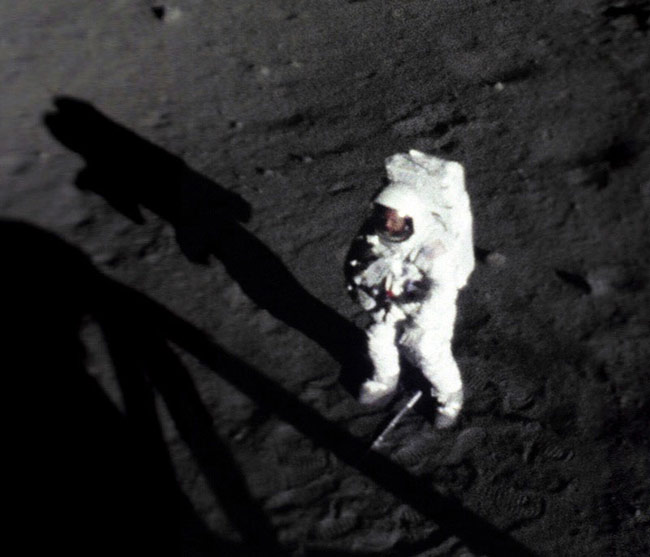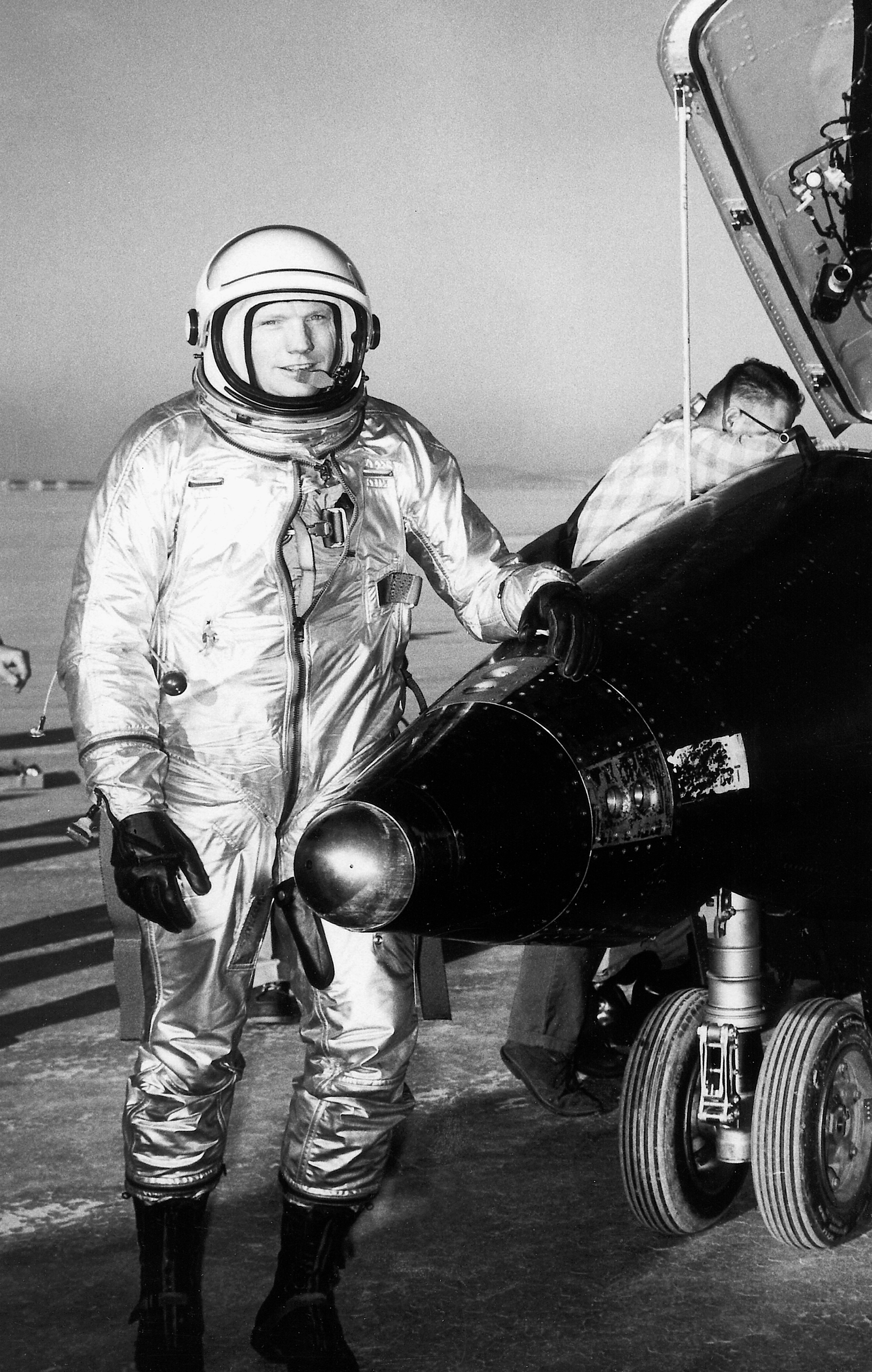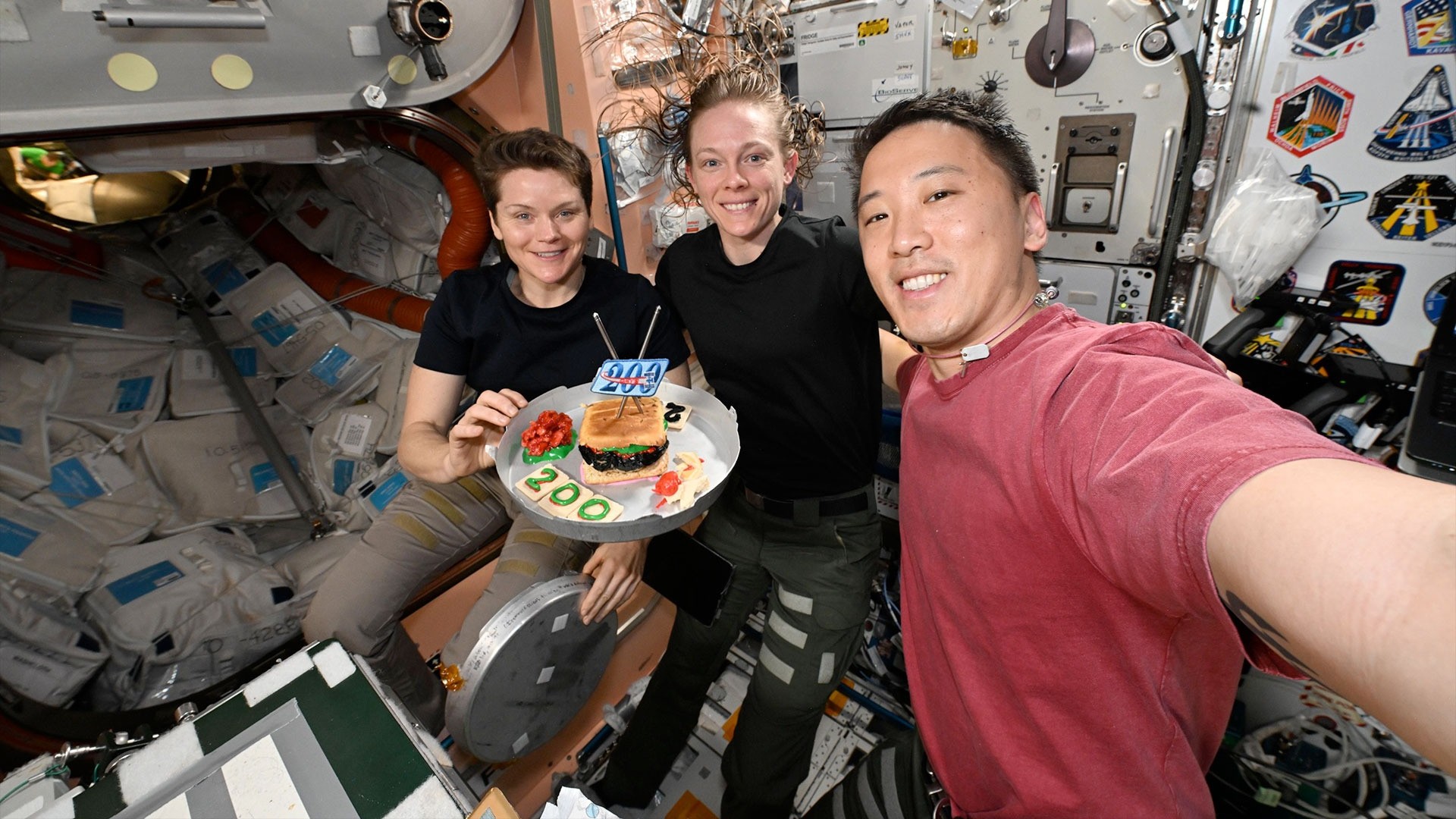Neil Armstrong, First Man to Walk on Moon, Dies at 82

Astronaut Neil A. Armstrong, who in 1969 took a "small step" to become the first human to set foot on the moon, has died at the age of 82.
Armstrong, who described his first steps on the lunar surface as a "giant leap for all mankind," died on Saturday (Aug. 25). He had undergone coronary bypass surgery on Aug. 7, two days after his 82nd birthday. Armstrong's death was confirmed in a statement by his family.
"Neil Armstrong has passed away following complications resulting from cardiovascular procedures," his family wrote on the website neilarmstronginfo.com. "Neil was our loving husband, father, grandfather, brother and friend."
First man
Selected with NASA's second group of astronauts in 1962, Neil Armstrong first flew in space as the command pilot of the Gemini 8 mission in March 1966. On the sixth crewed flight of NASA's two-seater capsule, Armstrong and pilot David Scott achieved the first docking of two spacecraft in orbit, linking up with an unmanned Agena target vehicle. [Photos: Neil Armstrong Remembered]
But the flight was a near disaster, suffering the first critical in-space failure of a U.S. spacecraft after a stuck thruster set the Gemini spacecraft spinning. Armstrong ultimately regained control by using their re-entry system thrusters, steadying the spacecraft and forcing an early, but safe end to the mission.
Three years later, as spacecraft commander for Apollo 11, the first manned lunar landing mission, Armstrong gained the distinction of being the first man to land a craft on the moon and the first to step on its surface.
Breaking space news, the latest updates on rocket launches, skywatching events and more!
"He was the best, and I will miss him terribly," Apollo 11 command module pilot Michael Collins said in a statement released by NASA.
Armstrong's first words upon becoming the first person to step onto another planetary body on July 20, 1969 — "That's one small step for (a) man, one giant leap for mankind" — instantly became a part of history.
Together with lunar module pilot Buzz Aldrin (then Edwin Aldrin), Armstrong explored the Sea of Tranquility during a 2 hour, 36 minute moonwalk. He and Aldrin collected 48.5 pounds (22 kilograms) of lunar material, including 50 moon rocks, deployed science experiments and planted the U.S. flag.
A plaque attached to their lunar lander "Eagle" read in part "We came in peace for all mankind," which underscored that Armstrong and Aldrin were there as representatives of all humans.
"My friend Neil took the small step but giant leap that changed the world and will forever be remembered as a landmark moment in human history," Aldrin said Saturday in a statement. "I had truly hoped that in 2019, we would be standing together along with our colleague Mike Collins to commemorate the 50th anniversary of our [Apollo 11] moon landing. Regrettably, this is not to be." ["One Small Step" That Changed the World (Video)]
"Neil will most certainly be there with us in spirit," he said.
Life after the moon
Soon after returning from the moon, Armstrong announced he would not fly in space again.
"Neil Armstrong was also a reluctant American hero who always believed he was just doing his job," his family said in their statement. "He served his nation proudly, as a navy fighter pilot, test pilot, and astronaut. He also found success back home in his native Ohio in business and academia, and became a community leader in Cincinnati."
Following his return from the moon and the world tour that followed, Armstrong served at NASA Headquarters as the deputy associate administrator for aeronautics, managing the agency's overall aviation research and technology.
He resigned from NASA a year later in 1971 and accepted a position as a professor of aerospace engineering at the University of Cincinnati, a role he served through the end of the decade. From 1982 through 1992, Armstrong was chairman of Computing Technologies for Aviation, Inc., in Charlottesville, Va.
Born in Wapakoneta, Ohio, on August 5, 1930, Armstrong earned a bachelor of science in aeronautical engineering from Purdue University in Indiana and a Master of Science in aerospace engineering from the University of Southern California. He was later awarded honorary doctorates from a number of universities.
Following three years as a naval aviator, Armstrong joined the National Advisory Committee for Aeronautics (NACA), the predecessor to NASA, in 1955. His first assignment was with the Lewis Research Center (now NASA Glenn) in Cleveland.
As a research pilot at NASA's Flight Research Center in California, Armstrong served as a project pilot on many of the nation's pioneering high performance aircraft, including the X-15 rocketplane. He flew over 200 different models of aircraft, including jets, helicopters and gliders.
Honored astronaut
Armstrong was a fellow with the Society of Experimental Test Pilots and the Royal Aeronautical Society; honorary fellow of the AIAA (American Institute of Aeronautics and Astronautics), and International Astronautics Federation.
He was a member of the National Academy of Engineering and the Academy of the Kingdom of Morocco. He served as a member of the National Commission on Space (1985-1986), as Vice Chairman of the Presidential Commission on the Space Shuttle Challenger Accident (1986), and as Chairman of the Presidential Advisory Committee for the Peace Corps (1971-1973).
Armstrong was decorated by 17 nations and was awarded many special honors, including the Presidential Medal of Freedom; the Congressional Space Medal of Honor; the Explorers Club Medal; the Robert H. Goddard Memorial Trophy and the NASA Distinguished Service Medal. He was also bestowed with the Harmon International Aviation Trophy; the Royal Geographic Society's Gold Medal; the Federation Aeronautique Internationale's (FAI) Gold Space Medal; the American Astronautical Society (AAS) Flight Achievement Award; the Robert J. Collier Trophy and the AIAA Astronautics Award. Armstrong received the Octave Chanute Award and the John J. Montgomery Award.
In 2011, Armstrong and his Apollo 11 crewmates received the Congressional Gold Medal, the highest civilian award bestowed by Congress.
"For those who may ask what they can do to honor Neil, we have a simple request," his family wrote. "Honor his example of service, accomplishment and modesty, and the next time you walk outside on a clear night and see the moon smiling down at you, think of Neil Armstrong and give him a wink."
Armstrong is survived by his wife, two sons, a step son and step daughter, ten grandchildren, and a brother and a sister.
This story was updated at 8:18 p.m. ET.
Follow collectSPACE on Facebook and Twitter @collectSPACE and editor Robert Pearlman @robertpearlman. Copyright 2012 collectSPACE.com. All rights reserved.
Join our Space Forums to keep talking space on the latest missions, night sky and more! And if you have a news tip, correction or comment, let us know at: community@space.com.

Robert Pearlman is a space historian, journalist and the founder and editor of collectSPACE.com, a daily news publication and community devoted to space history with a particular focus on how and where space exploration intersects with pop culture. Pearlman is also a contributing writer for Space.com and co-author of "Space Stations: The Art, Science, and Reality of Working in Space” published by Smithsonian Books in 2018.
In 2009, he was inducted into the U.S. Space Camp Hall of Fame in Huntsville, Alabama. In 2021, he was honored by the American Astronautical Society with the Ordway Award for Sustained Excellence in Spaceflight History. In 2023, the National Space Club Florida Committee recognized Pearlman with the Kolcum News and Communications Award for excellence in telling the space story along the Space Coast and throughout the world.




